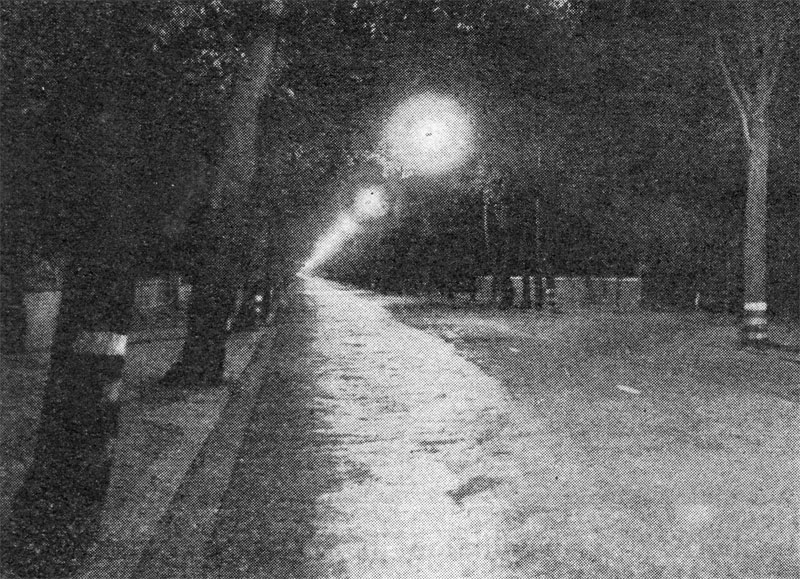|
Metrovick

|
Metrovick
Metropolitan-Vickers
Number One
Kingsway
London WC2
England
|

1940s logo
|

1950s logo
|
The firm are exhibiting their Liverpool type fittings which use the new
"Metrovick" horizontal Mercury lamps which don't require magnetic control of the arc. The installation
uses 400W units spaced at 90' and 135' apart in staggered formation, mounted on 10' brackets at 25'
from the ground. It is noticeable as it's almost entirely free from glare whilst giving good uniform
kerb-to-kerb illumination of the road surface. They also note
that a lantern of refractor type (the Kingsway) should be available for demonstration. - APLE Conference Programme 1937
Their 1938 exhibition featured lanterns in curtained cabinets to avoid glare! Representative lanterns featured include
the Kingsway and Liverpool lantern - the latter being extensively used in Lancashire. They have also
developed a new single-piece refractor plate mercury lantern and a refractor plate sodium lantern for the first time. Scale models
of two concrete and two steel street lighting poles were also shown. - Public Lighting #10, 1938 and APLE Conference Programme 1938
Two adverts were inserted in the 1939 programme: one for the new Trafford lantern and
one for the MetroVick Ripplay system. - APLE Conference Programme 1939
The firm return after the war with a selection of pre-war lanterns which have small, but valuable, modifications.
- Public Lighting #37, 1945
Only the Trafford, Popular and Ealing lanterns
were displayed at the conference, but the programme included lengthy descriptions of
the Trafford, Gower, Urmston, Poplar,
Ealing and Aldwych lanterns. - APLE Conference Programme 1945
A wide range of lanterns were available for inspection. For Group "A" roads: Trafford,
Gower, Urmston and Polar; for Group "B" roads: Ealing and
Welwyn. - APLE Conference Programme 1946
The "Ripplay" centralised control system allows an electricity
supply authority can control off-peak loads. This involves an audio-frequency generating set at the control
centre and special relays or switches at each of the remote points where a switching operation is
performed. The generator unit injects into the power supply system a series of pre-arranged impulses
of a particular audio-frequency to which only the appropriately tuned relays or switches will
respond. Thus the load circuit can be opened or closed by the operator at the remote control point.
In its improved form, the "Ripplay" system allocates a single audio-frequency to each network,
and discrimination by sensitive relays of the vibrating reed pattern is provided by a method of low
frequency pulsing that givs twelve switching channels. An advantage of the single audio-frequency
is that it enables the injection plant to be simplified and thus reduces capital expenditure; further
it makes the system immune from interference caused by spill-over signals from adjacent and
interconnected networks. - Public Lighting #45, 1947

Installation of Metropolitan Vickers Trafford lanterns along Scarisbrick Road for the APLE 1947 Conference.
Are exhibiting the Trafford and Poplar lanterns. - APLE Conference Programme 1947
The firm was consolidated into AEI Lamps And Lighting in 1956. The old manufacturing name of Metropolitan Vickers
was dropped and the tradename of Cosmos was continued by AEI.
References:
The Illuminating Engineer 1928
APLE Conference Programme Folkestone 1937
APLE Conference Programme Bournemouth 1938
APLE Conference Programme Glasgow 1939
APLE Conference Programme Glasgow 1945
APLE Conference Programme London 1946
APLE Conference Programme Southport 1947
- External Links:
- Grace's Guide
|



